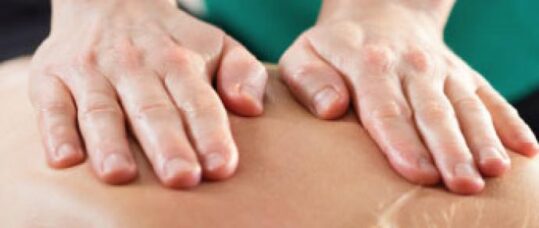Low back pain: presentation and management

Key learning points:
– Low back pain is an extremely common symptom that is encountered among patients and staff
– Management of back pain is generally conservative, except for sciatica and cauda equina syndrome, when referral for possible surgical intervention must be considered
– Given the recurrent nature of low back pain, patient-centred management strategies are preferred so patients can manage their symptoms themselves in the future
Low back pain is so common that it might be considered normal. Nurses will encounter it themselves, and in their patients and colleagues. The majority (80-90%) of the time it is not serious, the exact cause of the pain is unknown, although people speculate its cause and so it’s known as non-specific low back pain.1 For most people low back pain is a symptom only and the cause is unknown, for which there is no need for great concern, complicated investigations or for serious interventions. Despite this it can still be the cause of considerable pain and dysfunction, such as time off work and incapacity regarding sporting activity. Approximately 60-80% of all adults will have at least one episode of low back pain in their lifetime. Once a person has experienced an episode of low back pain, 40-50% will have a repeat episode in the same year, and 50% will have recurrence at some point. Given this natural history, encouraging people to find the best way to manage their symptoms effectively is an important healthcare objective.
Rather than making a diagnosis of low back pain, which is not really possible, most guidelines suggest a triage-type approach, in which the very small minority with serious problems are ‘weeded’ out and referred on, while the majority with ordinary low back pain are dealt with in primary care. The triage is made up of these categories: mechanical, non-specific low back pain (80-90%), sciatica or nerve root pain (5-10%), and serious spinal pathology (1-2%).2 The triage is determined by certain specific questions during the history-taking, and might be confirmed by further investigations in the latter two groups. No further investigations are necessary in the non-specific low back pain group, and have in fact been associated with worse outcomes.
Non-specific low back pain
Related Article: Diagnosis Connect service will link people to advice from charities
It is important to emphasise that the majority of non-specific low back pain will not be diagnosed with any clear cause, and so expensive and harmful investigations such as X-rays are pointless and even counter-productive. Even if a cause was found, this rarely – if ever – improves the management strategy; so it is very unlike other symptoms, in which a cause is sought so that treatment can be directed at the source. Fortunately, this does not mean that we don’t know how to manage this problem. There are times when investigations, such as radiographs or magnetic resonance images are useful, but for non-specific low back pain, a brief history taking and physical examination can be used to rule out serious spinal pathology.
Non-specific low back pain quite often begins in the teenage years. It is common during adult working life but tends to become less common in older adults, for example those over 60. The exception to this is spinal stenosis is a very particular and recognisable form of back pain, which is due to degenerative changes in the spine that compress the nerve roots. Typically people with this problem will quite often describe constant back pain, but most typically the onset of leg symptoms after walking a particular distance, usually no more than a few hundred yards. Usually they have learnt that sitting down or leaning forward, which relieves the compression, will ease the symptoms. Therefore, they are temporarily alright, until they have walked the same distance again.
Sciatica
Non-specific low back pain can be accompanied by limited radiating pain into the buttocks and thighs. When pain is referred down into a leg, such as all the way to the foot, this is usually caused by pressure on a lumbar spinal nerve, and is known as sciatica, but is far less common (5-10% of all low back pain). Such a presentation is often accompanied by neurological signs or symptoms, such as pins and needles or muscle weakness. These accompanying signs are generally relevant to a specific nerve root, so that pins and needles or paraesthesia happens in a specific dermatome and muscle weakness in a specific myotome. Dermatomes and myotomes are areas of the body or muscle groups that are associated with certain lumbar spinal nerves. These are not always consistent, but common patterns do occur. For instance, most commonly affected are lumbar spinal nerve L5 and sacral nerve S1. If these nerves were affected, signs and symptoms might include paraesthesia in the big or little toe or the side of the foot, and weakness in the big toe and Achilles tendon muscles respectively. When sciatica is present and there is severe incapacity and work absence a surgical opinion might be sought from an orthopaedic surgeon or a neuro-surgeon. However, even in this instance this should be deferred for at least six weeks and conservative management should be attempted.
Serious spinal pathology
It is only very rarely (1-2% of all low back pain) that this pain is a symptom related to what is termed serious spinal pathology, and generally this can be suspected from specific and focused questions during the history taking. Very rarely low back pain can be caused by a secondary cancer, most commonly from a primary tumour of the breast or lung; so a question about any previous history of cancer can be useful, especially if the back pain does not appear to be mechanical in nature. Non-specific low back pain tends to behave in a very mechanical way, such as worsening when sitting a lot or bending, but improveing when standing, walking or lying down. Back pain that’s related to cancer quite often is constant in nature, never going away, and is not relieved by lying down.
The other important question aims to exclude cauda equina syndrome. This occurs when there is compression of the cauda equina, which means horse’s tail, an apt description of what happens to the spinal cord that terminates around lumbar vertebrae one or two and becomes multiple nerve roots that exit via lower lumbar foramen. Compression of the cauda equina is an extremely rare presentation usually associated with bilateral sciatica, pins and needles in the genital regions, and multiple neurological signs and symptoms, which may include disturbance of bladder and bowel functions. This is generally deemed to be a medical emergency that requires urgent referral to a neuro-surgeon with no attempt at conservative therapy. It has been suggested that failure to refer these patients urgently can result in permanent bladder, bowel or sexual dysfunction.3,4
Management of non-specific low back pain
Unfortunately, there are a plethora of treatments that can be applied to non-specific low back pain, none of which have been found to be consistently most effective.
The most commonly applied interventions are probably drugs treatments, exercises, and manual therapies, all of which have some evidence to support them. Drug therapies should be either low risk analgesics, such as paracetamol, or a short course of non-steroidal anti-inflammatory drugs, such as aspirin or ibuprofen. Prolonged use of the latter has been associated with stomach irritation problems, and even ulcers, and should therefore be avoided. Patients can be advised to take short courses of these, but should be encouraged to return for a review if these are not effective.
Related Article: CVD prevention must be national health priority, says report
There are numerous types of exercises that have been used for the management of low-back pain, which include directional preference or McKenzie exercises, stabilisation exercises and cardio-vascular exercises. All of these have some evidence to support their use, but none of them have been consistently superior. Instead they all are frequently prescribed by physiotherapists following an assessment to determine their appropriateness.5 A McKenzie assessment seeks to determine if extension (back ward bending), flexion (forward bending), or lateral (side flexion or rotation) movements can be used to centralise or to reduce intensity of symptoms. Most commonly (around 70-80% of time) extension exercises are found to be the directional preference reducing patient’s symptoms. However, these should not just be given routinely, but only following an appropriate assessment. The wrong exercises can worsen patients’ symptoms.
Exercises may be prescribed by osteopaths, physiotherapists and chiropractors. All three professions treat low back pain, and can be found in the private sector, where they will assess and manage patients independently. Physiotherapists, the largest of the three professions, are also commonly found in the NHS. These may be accessed through GPs and, less commonly, directly. Physiotherapists work both in primary and secondary care.
In general the other types of exercises seek to strengthen the muscle around the trunk, either the abdominal muscles of the tummy or the extensor muscles of the back. There is no guarantee that these exercises will work, but patients need to try the exercises to give them a chance of working. Unfortunately, as in many areas of medicine non-adherence with exercise prescription is very common. Therefore, it is unwise to state that an exercise programme has been ineffective unless it is first determined that the patient has actually been doing the exercises on a regular basis. Usually this should be four or five times a day in multiples of 10 to 15 repetitions.
The role of the primary care nurse
Primary care nurses will encounter patients with low back pain in clinics, perhaps incidentally or because of their back pain. Their role should be to exclude the serious spinal pathologies with the questions mentioned, and to refer urgently to a GP if they are present. If not they can reassure patients that back pain is normal though it can impact on their function and work. Suggest simple over-the-counter analgesics that could be used, and should be taken on a regular basis, while also recommending they keep as active as possible, and not to use bed rest.
References
1. Hoy D, March L, Brooks P, Woolf A, Blyth F, Vos T, Buchbinder R. Measuring the global burden of low back pain. Best Practice & Research Clinical Rheumatology 2010;24:155-165. DOI: 10.1016/j.berh.2009.11.002 (accessed 10 September 2015).
2. McGuirk B, King W, Govind J, Lowry J, Bogduk N. Safety, efficacy, and cost effectiveness of evidence-based guidelines for the management of acute low back pain in primary care. Spine 2001;26:2615-2622.
Related Article: Postnatal contraception advice reduces the risk of back-to-back pregnancies
3. Greenhalgh S, Selfe J. Red Flags: a guide to identifying serious pathology of the spine. Churchill Livingstone: Elsevier; 2006.
4. Greenhalgh S, Selfe J. Red Flags II. A guide to solving serious pathology of the spine. Churchill Livingstone: Elsevier; 2010.
5. Swinkels A, Cochrane K, Burt A, Johnson L, Lunn T, Rees AS. Exercise interventions for non-specific low back pain: an overview of systematic reviews. Physical Therapy Reviews 2009;14:247-259.

See how our symptom tool can help you make better sense of patient presentations
Click here to search a symptom


Low back pain is so common that it might be considered normal. Nurses will encounter it themselves, and in their patients and colleagues



